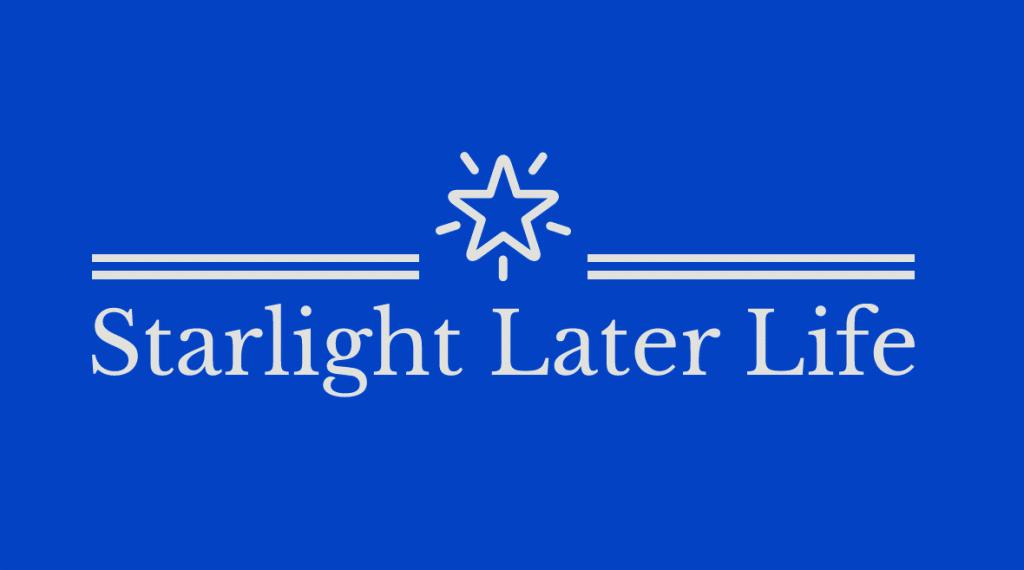
Many people are studying equity release costs as they are worried about hidden costs. Many lenders expect you to pay solicitors, valuation, advisor, and lender fees.
These costs do mount up. However, Starlight Later Life is a direct lender, and all the work is done in-house. It can even be done on the telephone instead of having yet another website you have to remember the password to.
There are no brokers or advisors adding costs.
Here is what Starlight Later Life offers:
- Free no obligation home valuation
- Loan to value of up to 65%
- No lender, broker or advisor fees
- A fixed £295 solicitor fee will be added to your loan unless you use your own solicitor
- 4.81% fixed for life
- No early repayment fees
- No fixed term or end date
- Ideal for tax planning or gifting
- Fee-free future further advances
- No valuation penalties for
You are encouraged to get your independent advice, and you can use your own solicitor if you prefer.
With Starlight equity release, there are no monthly payments, and like all equity releases, the interest on the loan is added to the loan. So the amount you own does grow slowerly over time. But with the new lower interest rates starting the second quarter of 2025, and the new confidence in the UK housing market, there is a good chance your house price appreciation could cover your accrued interest.



What costs are involved with Santander Equity Release?

Like any equity release product, Santander‘s Equity Release scheme involves various costs and considerations that are crucial for homeowners to understand before making a decision. Equity release Santander allows homeowners, typically those over the age of 55, to access the value tied up in their property, receiving this either as a lump sum or in smaller, regular amounts. There are two main types of equity release: lifetime mortgages and home reversion plans. It’s important to note that specific details may vary depending on the provider and the product selected. All the equity release costs should be made clear.

- Interest Rates: A critical cost in a lifetime mortgage, the most common form of equity release, is the interest rate. This rate can be fixed or variable, accumulating over time on the amount borrowed. The compound nature of the interest means the amount owed can snowball over the years.
- Arrangement Fees: The lender may charge an arrangement or application fee to set up the equity release plan. These fees vary between different providers and plans.
- Legal Fees: Legal advice and services are necessary for equity release, leading to solicitor fees. This ensures that all legal aspects of the equity release are correctly handled.
- Valuation Fees: Your property must be valued as part of the equity release process. Some providers might charge a fee for this valuation, though it’s sometimes offered for free as part of a deal.
- Advice Fees: Receiving advice from a financial advisor specialising in equity release is usually mandatory. This ensures you understand the implications of equity release and its suitability for your circumstances. Advisors may charge a fee for their services.
- Early Repayment Charges: If you decide to repay the equity release plan earlier than agreed, for example, if you sell your home or choose to repay the plan using other funds, there might be significant early repayment charges.
- Equity Release Impact on Benefits and Taxation: While not a direct cost, it’s essential to consider how receiving money from equity release might affect your eligibility for means-tested benefits. Additionally, although the money released is tax-free, it could affect your estate and inheritance tax.
- Compound Interest Effect: The effect of compound interest over an extended period can be substantial. The total amount to be repaid can exceed the original loan amount, especially if the plan runs for many years.
- Home Reversion Plan Specific Costs: If opting for a home reversion plan, where a portion of the property is sold, it’s important to understand the terms of this agreement and any specific costs or implications involved.
- Maintenance and Insurance Obligations: With equity release, you are typically required to maintain and keep the property insured, which can be an ongoing cost.
Given these various costs and implications, it’s essential to thoroughly research and understand the specifics of the Santander Equity Release product, or any equity release scheme, before proceeding. The impact on your financial situation, property, and heirs should be carefully considered, ideally with the help of professional financial and legal advice.

What costs are involved in Santander Lifetime Mortgages?

When considering Santander Lifetime Mortgages, a range of costs and financial implications come into play that are essential for homeowners to understand before making a decision. These lifetime mortgages, typically accessible to those over 55, allow homeowners to release equity from their property while retaining ownership. The unique aspect of these mortgages is that they do not require monthly repayments; instead, the loan amount and accumulated interest are repaid when the homeowner either passes away or moves into long-term care.

The primary cost in a lifetime mortgage is the interest rate, which can be either fixed or variable. The interest accumulates on the borrowed amount and can significantly increase the total amount owed over time due to its compound nature. This effect of compound interest is particularly noteworthy because it can lead to the total repayable amount being much higher than the original loan, especially if the mortgage runs for many years.
In addition to interest rates, Santander might charge an arrangement or product fees. These fees cover the administrative costs of setting up the lifetime mortgage and can vary depending on the lender and the specific product chosen. Another potential cost is the valuation fee, as a valuation of the property is necessary to determine how much equity can be released. While some lenders might offer this valuation for free as part of a promotional deal, others may charge a fee.

Legal advice is mandatory in obtaining a lifetime mortgage, which involves solicitor fees. These fees ensure that all legal aspects of the mortgage are correctly managed. Furthermore, financial advice from a qualified advisor is essential to understand the implications of a lifetime mortgage. Advisors may charge for their services, but their guidance is crucial to ensure the product meets the homeowner’s needs.
Early repayment charges are another aspect to consider. Suppose a homeowner decides to repay the lifetime mortgage earlier than planned, for example, by selling the home or choosing to repay the plan using other funds. In that case, substantial early repayment charges might apply.
Beyond these direct costs, it’s also essential to consider the impact on benefits and taxation. Receiving funds from a lifetime mortgage could affect eligibility for means-tested benefits. While the money released is tax-free, it could affect estate and inheritance tax.

Finally, insurance and maintenance costs are ongoing considerations. Homeowners are typically required to maintain their property and keep it insured to protect its value, which serves as security for the loan.
While Santander Lifetime Mortgages offers access to equity in one’s home, the decision to proceed should be made after carefully considering all the associated costs and implications. Professional financial and legal advice is highly recommended to navigate these complexities and make an informed decision.

With a Santander Lifetime Mortgage, are there any upfront fees?

With Santander Lifetime Mortgages, there can be several upfront fees that applicants should be aware of. These fees vary based on the specific terms and conditions of the mortgage product offered by Santander. It’s important to note that the fees and their amounts can differ from one financial product to another and may change over time.
- Arrangement or Product Fees: These are fees charged by the lender for setting up the lifetime mortgage. They cover the administrative costs involved in processing the mortgage application. Some lenders might waive these fees as part of a promotional offer, but typically, they are a standard part of the cost structure.
- Valuation Fees: Before a lifetime mortgage can be approved, the lender must assess the property’s value. This assessment usually requires a professional property valuation, which might incur a fee. The fee can vary depending on the value and type of the property.
- Legal Fees: Legal advice is essential in obtaining a lifetime mortgage. This involves hiring a solicitor to ensure that all legal aspects of the mortgage are correctly managed. The cost of these legal services can vary.
- Financial Advice Fees: Receiving advice from a financial advisor specialising in equity release is highly recommended and, in some cases, mandatory. This advice ensures that you understand the implications of a lifetime mortgage and whether it suits your circumstances. Advisors may charge a fee for their services.
Potential applicants need to consult directly with Santander or a qualified financial advisor to get the most current and relevant information about the fees associated with their Lifetime Mortgage products. This will ensure a clear understanding of all costs involved before making any commitments. Santander Equity release costs should come down in 2025 and into 2025, but the main reason for the costs is regulation.

Santander Later Life Mortgages



Santander Home Equity Release Costs
Home equity release schemes, offered by lenders like Santander, present a unique financial solution for homeowners, typically over the age of 55, to access the equity tied up in their homes. However, understanding the associated costs of such schemes is crucial for making an informed decision.
The most prominent cost in home equity release is the interest rate applied to the borrowed amount. In a lifetime mortgage, the most common type of equity release, this interest typically compounds over time, leading to a significant increase in the total amount to be repaid. The rate can be fixed or variable depending on the product and lender.
Arrangement or product fees are also a standard cost in these schemes. These fees cover administrative expenses involved in setting up the equity release plan. While some lenders might waive these fees as part of promotional offers, they are generally a standard part of the cost structure.

Valuation fees are another potential cost. A property valuation is necessary to determine how much equity can be released. Depending on the lender, this fee might be charged or included in the deal.
Legal and financial advisory fees are essential to consider as well. Seeking professional advice is recommended and often required to ensure that homeowners fully understand the implications and suitability of the equity release product for their situation.
Early repayment charges are crucial for those wishing to repay their loan earlier than planned, such as upon selling the property. These charges can be significant and vary depending on the terms of the agreement and the timing of the repayment.
Lastly, ongoing property insurance and maintenance costs must be factored in. Maintaining the property’s condition is usually a requirement of the equity release agreement, as the property serves as security for the loan.
While home equity release under 55 can offer a valuable financial solution for older homeowners, it is accompanied by various costs, including interest rates, fees, and the need for professional advice. It is essential to weigh these costs against the benefits and seek expert guidance to make a well-informed decision.

Santander UK plc.
Registered Office: 2 Triton Square, Regent’s Place, London, NW1 3AN, United Kingdom.
Registered Number 2294747.
Registered in England and Wales. www.santander.co.uk.
Authorised by the Prudential Regulation Authority and regulated by the Financial Conduct Authority and the Prudential Regulation Authority.
Our Financial Services Register number is 106054.